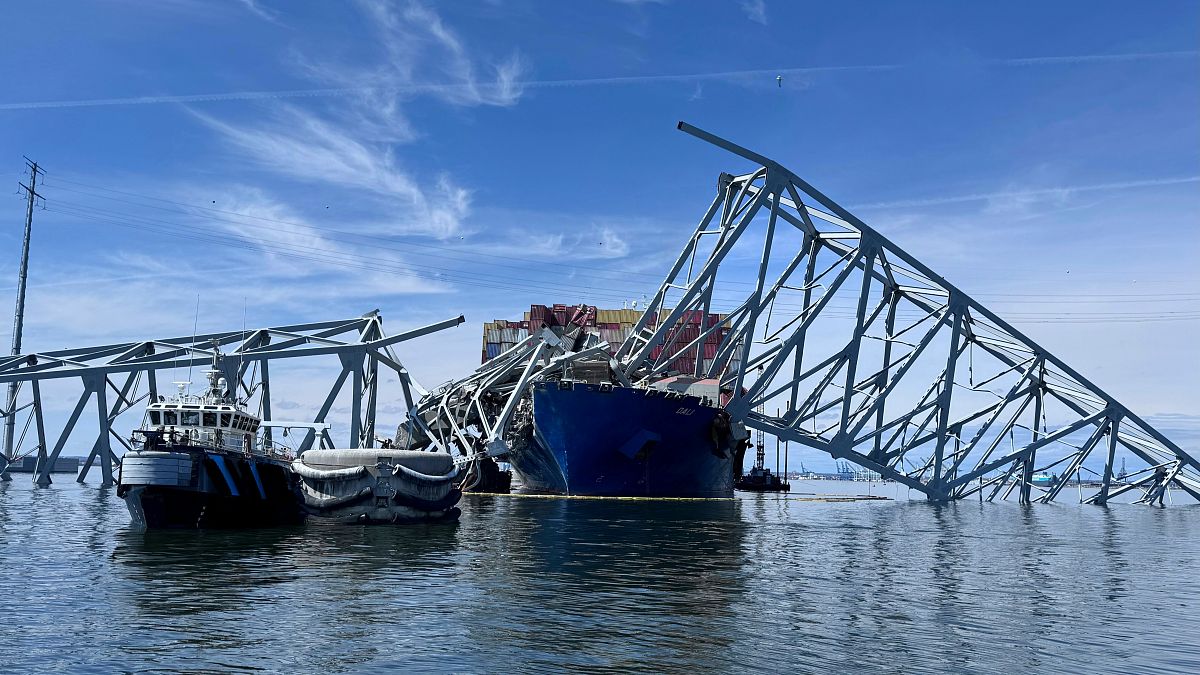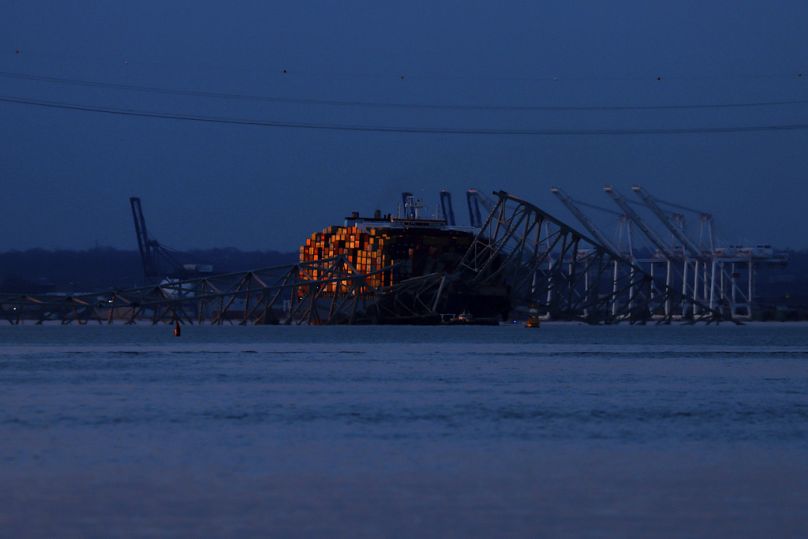
The US Coast Guard has opened a temporary channel to give access to vessels involved in clearing debris from the collapsed Francis Scott Key Bridge in Baltimore, Maryland.
Officials said the channel opening was part of a phased approach to let ships move through to the main port. Some barges and tugs that have been stranded in the Port of Baltimore since the collapse are also scheduled to pass through the channel.
Meanwhile crews are continuing to work to remove steel and concrete at the site of the bridge’s collapse into the Patapsco River, which happened when the Dali lost power and rammed into a supporting column on 26 March.
Authorities believe six workers plunged to their deaths in the collapse, including two whose bodies were recovered last week.
Meanwhile, the Dali’s owner and manager have jointly filed a court petition seeking to limit their legal liability for the disaster.

The joint filing seeks to cap the companies’ liability at about $43.6 million (€40.5 million). It estimates the vessel itself is worth up to $90 million (€83 million), and was carrying freight worth more than $1.1 million (€1 million). The estimate also deducts millions in repair costs and salvage costs.
The companies’ “limitation of liability” petition is a routine but important procedure for cases litigated under US maritime law. A federal court in Maryland will ultimately decides where responsibility lies and how much is owed.
As efforts to dismantle and remove the mangled wreck continue, the incident has added to worries about worldwide supply chain disruptions.
The Francis Scott Key Bridge lies across the entrance to the Port of Baltimore, which is a crucial port for vehicle exports in the US. The port saw more than 47 million tonnes of foreign cargo in 2023.
The US Small Business Administration has opened two centres in the area to help companies get loans to assist them with losses caused by the disruption of the bridge collapse.
Yvette Jeffery, a spokeswoman for the agency’s disaster recovery office, said affected businesses can receive loans for as much as $2 million. She said the effects could range from supply-chain challenges to decreased foot traffic in communities that depended heavily on the bridge.





